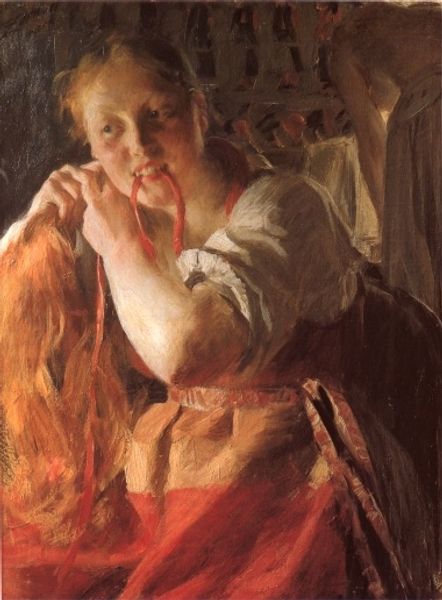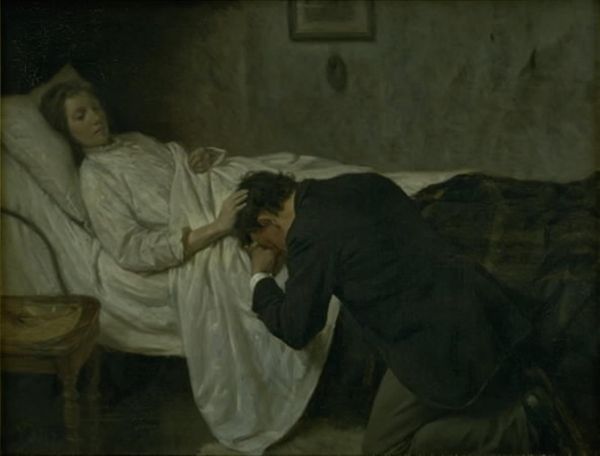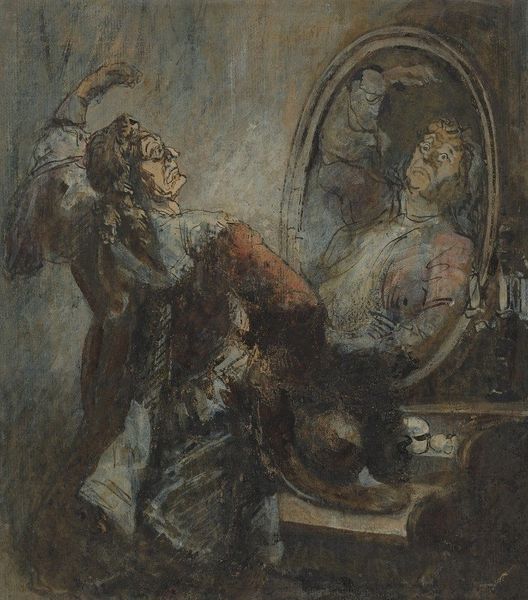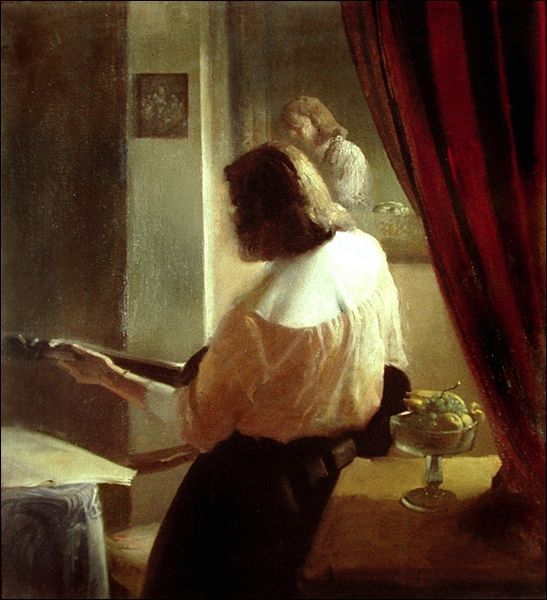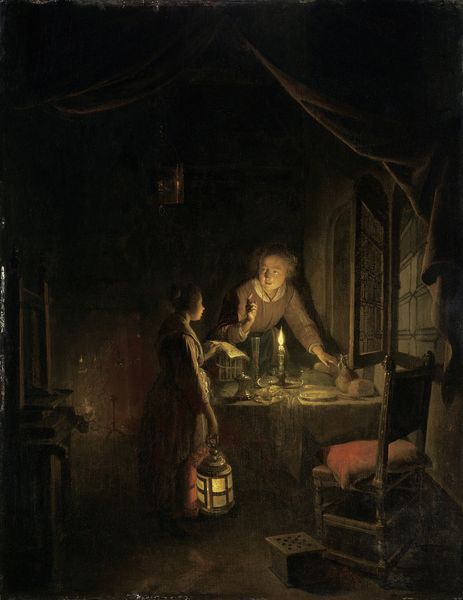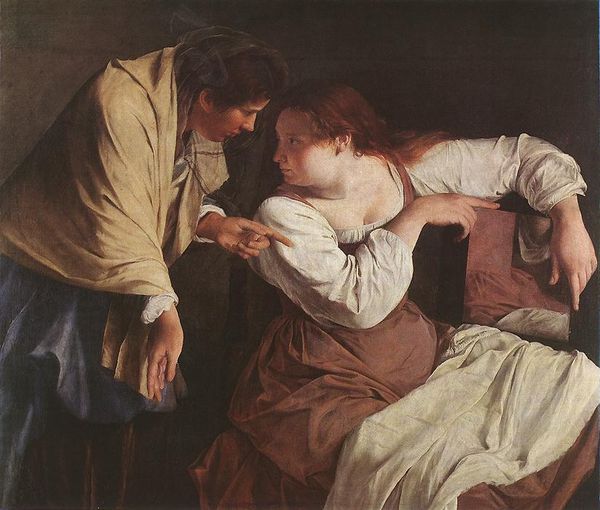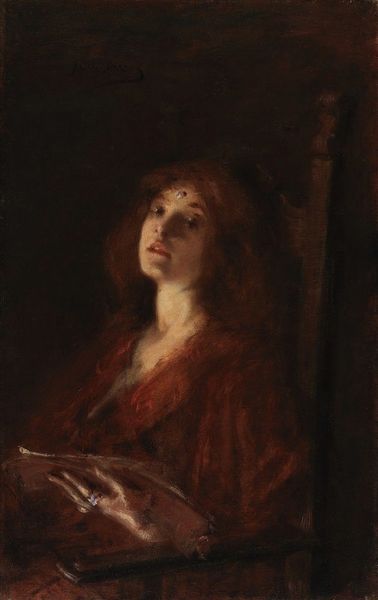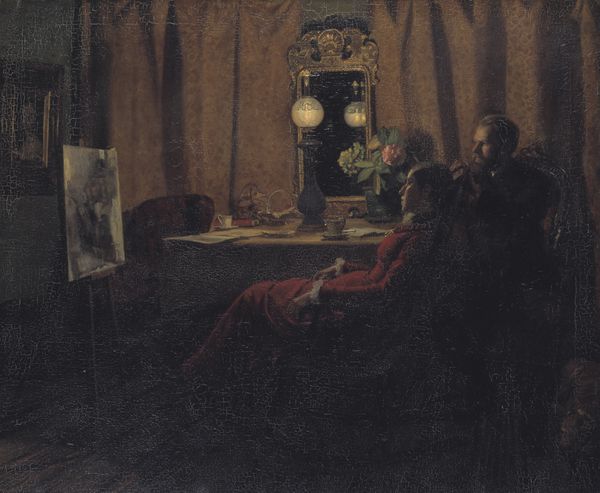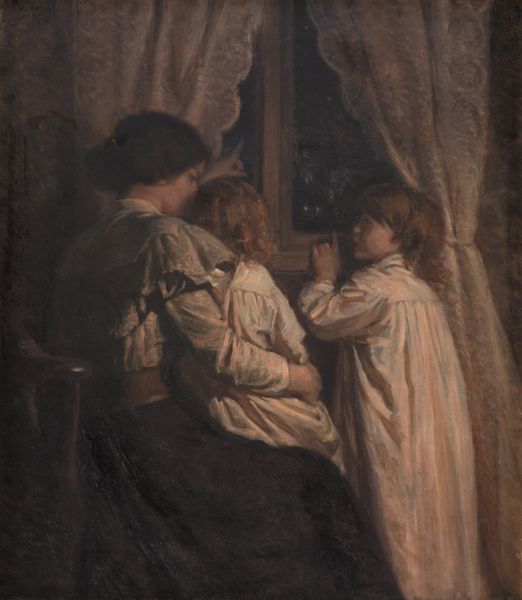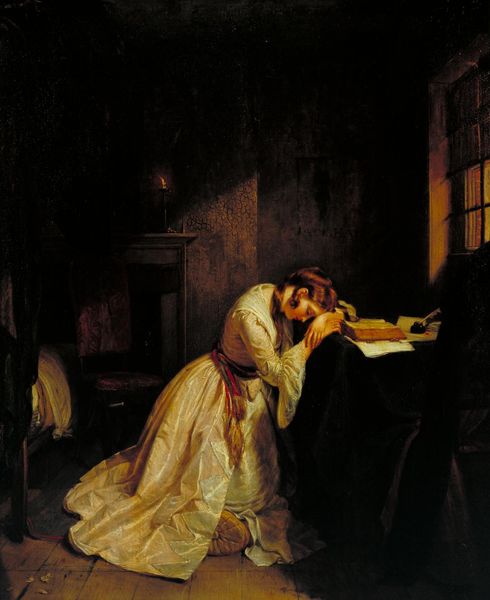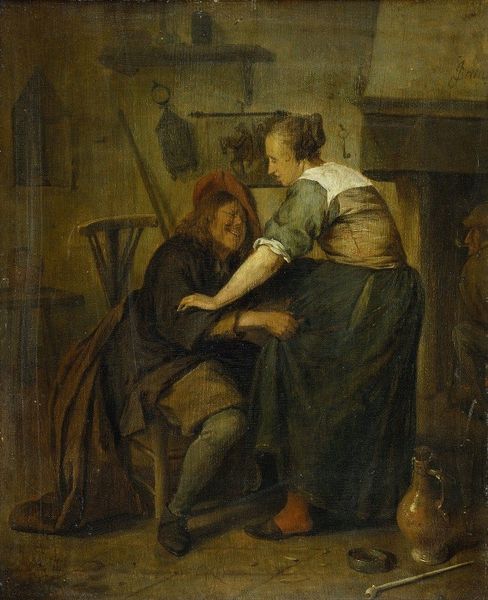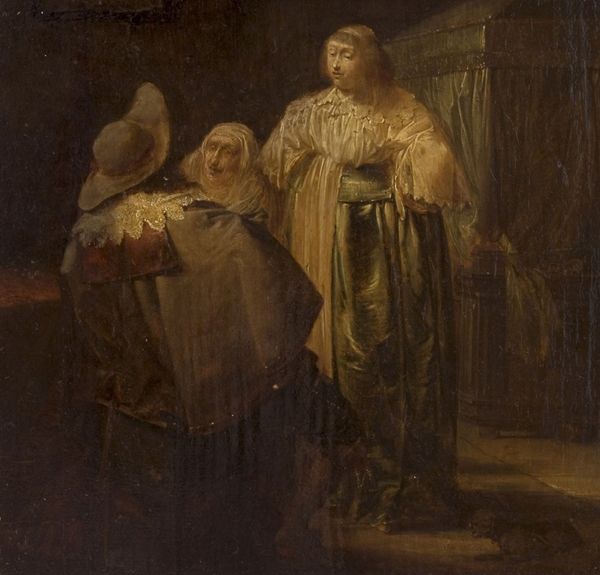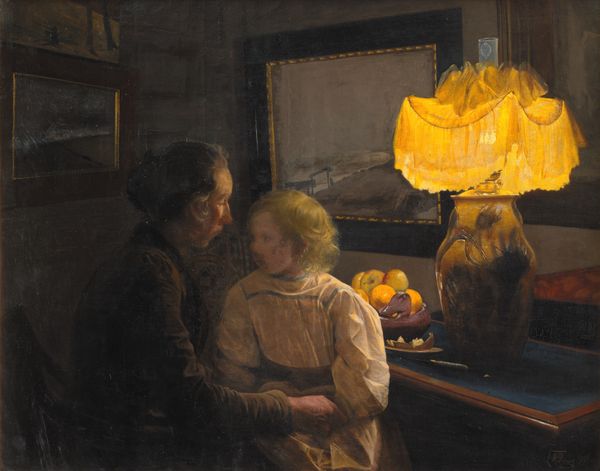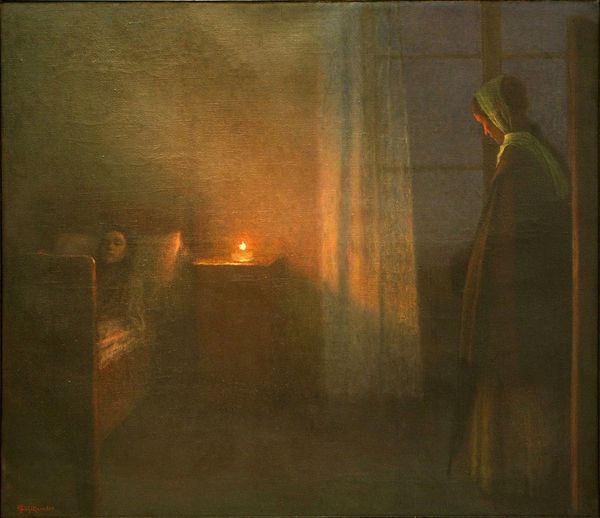
Copyright: Public Domain: Artvee
Editor: Here we have John Collier’s “All Hallowe’en” painted in 1895 using oil on canvas. I am really captivated by the mood – it feels so intimate and almost a little eerie with the candle light reflecting on her face in the mirror. How do you interpret this work, with its particular play of light and shadow? Curator: Observe the formal arrangement; the canvas is divided into distinct planes. The foreground displays a figure largely in shadow, guiding our sightline. The strategic use of chiaroscuro—that stark contrast between light and dark—not only shapes the forms but also contributes significantly to the emotional weight. Consider the geometric structure of the mirror; what impact does this "window" have on your perception? Editor: The mirror does create another dimension...like the woman is in dialogue with herself? The angles, lines, and balance between dark and light are all so deliberate, directing my eye. Curator: Precisely. The composition is structured to emphasize the woman's gaze. The subdued palette further contributes to a psychological reading, drawing attention to the emotional content manifest in her expression. Is the apple significant to your interpretation? Editor: Possibly as a reference to Eve or temptation in the context of self-knowledge, maybe? I focused so much on the emotional aspects that I hadn't quite teased that out yet. Curator: Indeed. Through meticulous rendering of light and form, Collier encourages an examination of interiority and perception. This formal reading unlocks a deeper symbolic understanding. Editor: This makes me rethink my initial interpretation. Now I appreciate how form creates the haunting effect beyond just the representation of the subject and I am now questioning myself, thinking of that apple! Curator: Exactly. Sometimes the most powerful elements lie not in overt narratives, but in the nuanced interplay of visual components.
Comments
No comments
Be the first to comment and join the conversation on the ultimate creative platform.
